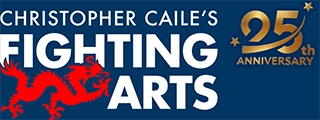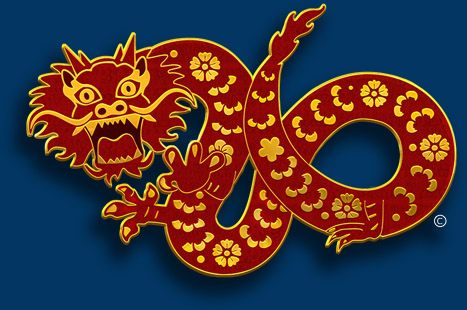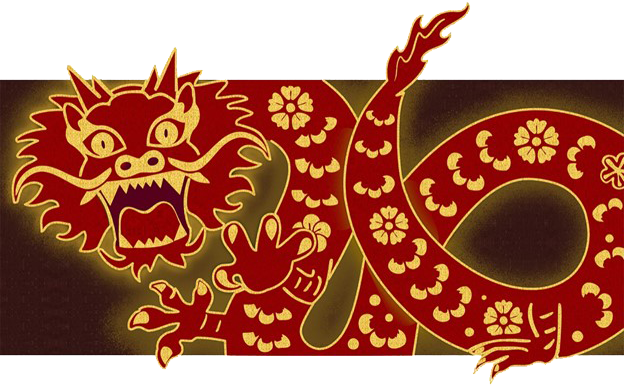The O-Soto-Gari Judo Throw In Jujutsu & Karate
(Continued)
by Christopher Caile
Feudal Period Weapons Oriented Jujutsu
In feudal Japan Samurai were rarely without their swords. (3) Other classes too often carried a variety of short knives and other weapons. Therefore techniques of self-defense often centered on weapon attacks, and the defender also often had a weapon that could be utilized. It was only later in times of prolonged peace (Tokugawa period that preceded modern Japan and later) that jujutsu techniques evolved to focus on unarmed attacks, although defense against armed attacks was still taught. For more information on the evolution of jujutsu see the FightingArts series, "Jujutsu: The Evolving Art."
The following example, an adaptation of a Daito-Ryu aikijujutsu technique, illustrates a defense against a short sword attack.(4) Most often the long samurai sword (swords were usually worn in pairs, long and short, along with a knife) was removed when indoors. Likewise when warriors were together in camp, long swords were usually removed and stored. But, short swords and/or tanto (knives) were a potential threat.
 |
 |
 |
 |
 |
Here we see the judo o-soto-gari technique in an earlier form against an armed assailant, and when a counter attack involved a weapon.
Here the defender raises his left arm to take the center line to intercept the attacker's arm. Distance is adjusted by the defender who either stands in place (not shown) or takes a small step forward to adjust the distance (shown).
The next series of photos are shown from the reverse side. In the second photo the defender slides his left leg at an angle (not a step but a drop of weight) while using his blocking hand to guide down the sword arm (not grabbing it until the end). The body is also turned at the same angle of the step so the left arm remains centered. At the same time the defender pulls a knife (tanto) and stabs the attacker (in an actual attack, the knife would be left sticking into the attacker-not shown). In modern practice an atemi strike is usually substituted, but the strike is a thrusting one used more for distraction and off-balancing (able to actually drive the recipient backward) than to create an injury (as in karate or other percussion arts).(5)
The combined movement is uniquely different from modern jujutsu in several respects. First the defender lets his weight (thus his center) fall into the technique of guiding the attacking arm down while simultaneously thrusting (with arm and body moving together) with the other arm — a very powerful technique that has to be felt to be understood.
In the next photo the defender drives his hand up into the opponent's chin (another alternative in some situations for the palm stike is the brim of a helmet including the flat type helmet, or jingasa, used by lower samurai or the more sophisticated Kabuto helmets of higher ranked samurai) driving his body backward while simultaneously keeping the attacker's right arm extended. The defender then steps forward raising the right knee (shown here without partner). The throw is executed by thrusting the leg (heel first) downward and back, like a thrusting downward karate kick to the ankle which hits across the assailant's upper calf or back of the knee (which could also be used as a vital point attack to the calf or back of the knee). Because of the dangerous nature of this kick, modern judo prefers to use a sweeping motion of the leg to affect the throw.
In the techniques shown above we have seen three distinct stages in the evolution of the judo o-soto-gari throw. In judo the throw itself is central and it is set up with some combination of off-balancing, body maneuvering and strength. The goal is to throw or win a point in a competition.
In post feudal jujutsu systems similar throws are usually performed as part of a response to various unarmed attacks — the throw being only one part of the response. Setting up for the throw involves unbalancing as in judo, but percussion and/or arm manipulation techniques are added. The goal usually to defend oneself. In addition the mechanics of the leg throw involves a thrusting kick-like leg maneuver rather than a sweep as found in modern judo.
In daito-ryu (as well as in other feudal age related jujutsu system techniques) the throw is also performed as part of a self-defense maneuver, but the attack is often by weapon and the goal of the defense is often to kill the assailant. Off balancing is performed (as in judo) but the body moves differently – weight or body dropping is substituted for muscle action (drawn from Samurai body movement patterns that are reflected in execution of sword and other weapon techniques). And like jujutsu the throw is executed with a kicking, rather than a sweeping motion.
In Karate And Other Percussion Arts

Although not discussed in Funakoshi's book, in the process of encircling the neck the right forearm can forcefully strike down and into the side of the opponent's neck to hit both the bundle of nerves leading from the neck down into the arm (known as the brachial plexus), as well as the carotid sinus (a small sack-like organ of tissue lying on the upward branch of the carotid artery which inflates with increasing blood pressure) which helps the body regulate blood pressure. This strike will momentarily stun or knock out the opponent.
Interestingly aikido employs a similar technique known as a kokyu-nage, or breath throw, which looks similar to the Funakoshi technique but so controls the head and body that the opponent falls backward without the need for either a throw (as in o-soto-gari) or trip (as demonstrated by Funakoshi above).
Today, however, the o-soto-gari type throw is often found in karate as part of a fighting or self-defense sequence that often includes various striking counterattacks (set-ups) or finishes (after the throw).




Here as an assailant throws a right punch to the face, the defender steps back while simultaneously blocking the punch with a left upper block and countering with a right punch to the chin. Instead of withdrawing the punching arm (if the punch was successful) the defender reaches up to the inside of the assailant's neck and hooks it (here grabbing the collar) to pull the neck and trunk forward (while the left arm is controlled) into a right knee kick (pulling down while kneeing upward) to the midsection, or alternately the face. (6)
Without putting down the knee (the defender already having shifted to the left of the assailant), the right leg then sweeps the back of the attacker's right leg. At the same time the defender grabs the right shoulder of the assailant and uses the elbow to hit into the upper chest (not shown but the way the technique is practiced) or into the chin and neck forcing it backward (as shown) in often used in street situations. This drives the head and upper torso backward which arhes the body backward as the defender's left arm pulls the opponent's right arm (forcing the weight onto the right leg).
In this karate technique taken from Seido Juku karate (inherited by Mas Oyama's Kyokushin, Oyama having studied with Funakoshi in Tokyo) the finishing technique is not the throw. Here the defender controls the assailant by arching his left arm (elbow down) over his left knee so the defender cannot roll forward (the elbow can be easily broken) while pressing his right knee against the assailant's back so he cannot roll backward. This arches the attacker's body backward. This momentary controlling technique allows the defender to finish the technique with a downward sinking strike to a vital point on the side of the assailant's jaw, head, or neck.
 |
There are countless applications of this same type of throw. Here another is shown known taken from Gogen Yamaguchi's book, "Goju Ryu: Karate Do Kyohan," the technique called, "Taoshi- waza 3." It is executed in free-fighting (kumite) application against a front kick. The photos illusrate the sequence very well. (7)
Karate, taekwondo, and many kung fu systems emphasize percussion or striking techniques. It is thus no surprise therefore, that blocking and strikes (versus grabs in jujutsu) are emphasized. Unlike jujutsu, where strikes are used to distract or momentarily stun, and diato-ryu where they are used to distract but to also off-balance, in the percussion arts like karate, the goal is a knock-out, or to injure. Thus, throwing is secondary, although used in many applications. |
Footnotes:
(3) Samurai, however, did not wear their swords everyplace. When inside or in military camp, their long swords were usually not worn. Likewise, when in the presense (inside) of the Shogun, the Emporor and many high officals, swords or other weapons were not permitted unless the Samurai was of a very high status which permitted the carrying of a short (not long) sword.
(4) This particular technique is adapted from Hakuhikai Daito-Ryu Aikijujtsu founded by Okayabashi Shogen Senesi. Daito-ryu is one of Japan's oldest martial traditions and was developed for use in military camps, castles and other environments for defense against a variety of weapon, as well as non-weapon, attacks. It is a living example of jujutsu as it was practiced in the feudal ages, when Samurai were engaged in constant battle. Today Daito-ryu is experiencing a popular revival in Japan and elsewhere, and there are now up to 50 diato-ryu groups in Japan and many more elsewhere. But unfortionatly there is also a great disparity in techniques and how they are executed.
Diato-ryu was founded by Shinra Saburo Minamoto during the Heian period (794-1156) and was perfected in times of warfare when methods of self-defense techniques were needed for military environments and for those times when Samurai were dressed in light armor or regular (non-armored) attire. The techniques were most fully systematized (some say modified) by Sokaku Takeda with sword and unarmed techniques practiced together. Daito-ryu has inspired many succeeding disciplines, including aikido founded by Morihei Usehiba (Takeda's student from 1911-1918), and many other jujutsu and aikijujutsu systems. Today Daito-ryu Aikijujutsu is often practiced with Itto-ryu Kenjutsu (sword techniques) that were practiced within the Aizu clan from which Takeda descended.,
(5) The strike used by karate, taekwondo, and most kung fu systems use muscles to create speed and impact (causing injury to the point attacked). In diato-ryu emphasis is on "bones and joints" and utilization of "non-twisting" (between hip and shoulders) to create a one line posture and movement (hitoemi) that combines weight dropping with the extension of the bones of the arm through the target. The effect of this type strike is not to cause local injury (although many report that its effect can be felt internally). Instead this type punch uproots and off-balances.
(6) If the punch had been blocked the defender could have continued the counter attack with a right elbow to the right side of the oppenent's head or neck which keeps the fist in front of the opponent. This allows an easy transition into the neck hook that follows.
| (7) Reproduced here with the approval of Masters Publications which has reprinted the book in a translated (English) limited version.
Goju RyuK Karate Do Kyohan" by Gogen "The Cat" Yamaguchi now offered on our Collector's Corner of the e-store. |
 |
About the Author Christopher Caile

Screenshot
Christopher Caile is the Founder and Editor-In-Chief of FightingArts.com. He has been a student of the martial arts for over 65 years.
He first started in judo while in college. Then he added karate as a student of Phil Koeppel in 1959 studying Kempo and Wado-Ryu karate. He later added Shotokan Karate where he was promoted to brown belt and taught beginner classes. In 1960 while living in Finland, Caile introduced karate to that country and placed fourth in that nation's first national judo tournament.
Wanting to further his karate studies, Caile then hitch hiked from Finland to Japan traveling through Scandinavia, Europe, North Africa, the Middle East and South and Southeast Asia — living on 25 cents a day and often sleeping outside.
Arriving in Japan (1962), Caile was introduced to Mas Oyama and his fledgling full contact Kyokushinkai Karate by Donn Draeger, the famous martial artist and historian. Donn also housed him with several other senior international judo practitioners. Donn became Caile's martial arts mentor, coaching him in judo and introducing him to Shinto Muso-ryu under Takaji Shimizu.
Caile studied at Oyama's honbu dojo and also at Kenji Kurosaki's second Tokyo Kyokushinkai dojo. In his first day in class Oyama asked Caile to teach English to his chief instructor, Tadashi Nakamura. They have been friends ever since. Caile also participated in Oyama's masterwork book, "This Is Karate."
Caile left Japan with his black belt and designation as Branch Chief, the first in the US to have had extensive training in Japan directly under Oyama Sensei. As such, Oyama Sensei asked him to be his representative on visits to his US dojos to report on their status.
A little over a year later, Nakamura, Kusosaki and Akio Fujihira won an epic David vs. Goliath challenge match against Thailand's professional Muay Thai Boxers in Bangkok, Thailand, thrusting Kyolushinkai and Nakamura into national prominence.
Back in the US Caile taught Kyokushinkai karate in Peoria, Il while in college and later in Washington, DC. while in graduate school. Durimg this time Shihan Nakamura had moved to New York City to head Kyokushinkai's North American Operation.
In 1976 when Kaicho Tadashi Nakamura formed the World Seido Karate organization, Caile followed. Living then in Buffalo, NY, Caile taught Seido karate and self-defense at the State University of New York at Buffalo (SUNY Buffalo) for over 15 years where he also frequently lectured on martial arts and Zen in courses on Japanese culture.
Caile moved to New York City in 1999 to marry Jackie Veit. He is now an 8th degree black belt, Hanshi, training in Seido Karate's Westchester, NY Johshin Honzan (Spiritual Center) dojo. In Seido Caile is known for his teaching of and seminars on kata applications. He also produced a 14 segment video series on Pinan kata Bunkai currently available to Seido members.
Caile is also a long-time student and Shihan in Aikido. He studied in Buffalo, under Mike Hawley Shihan, and then under Wadokai Aikido's founder, the late Roy Suenaka (uchi deshi under Morihei Ueshiba, founder of Aikido and was Shihan under Tohei Sensei). In karate, Suenaka (8thdan) was also an in-house student of the Okinawan karate master Hohan Soken.
Having moved to New York City, Caile in 2000 founded this martial arts educational website, FightingArts.com. Twenty-five years later, in 2025, it underwent a major update and revision.
For FightingArts.com and other publications Caile wrote hundreds of articles on karate, martial arts, Japanese art, Chinese Medicine and edited a book on Zen. He also developed relationships with a cross section of leading martial arts teachers. Over the last four decades he has conducted extensive private research into karate and martial arts including private translations of the once secret Okinawan hand copied and passed on Kung Fu book, the Bubishi, as well as an early karate book by the karate master Kenwa Mabuni. He periodically returns to Japan and Okinawa to continue his studies and participate Seido karate events. In Tokyo he practiced (with Roy Suenaka Sensei) in a variety of aikido organizations with their founders – including private interviews and practices at the Aiki-kai Aikido Honbu dojo with the son and grandson of aikido's founder, Doshu (headmaster) Kisshomaru (an old uchi-deshi friend) and his son, Moriteru Ueshiba and in Iwama with Morihiro Saito. On Okinawa he studied Goju Ryu karate under Eiichi Miyazato, 10th dan founder of Naha's Jundokan, and also with Yoshitaka Taira (who later formed his own organization, who specialized in kata Bunkai. While there Caile also trained with Hohan Soken's senior student, Master Fusei Kise, 10 dan as well as with the grandson of the legendary karate master Anko Itosu.
Caile's other martial arts experience includes: Diato-ryu Aikijujitsu and Kenjitsu, kobudo, boxing, Muay Thai, MMA, Kali (empty hand, knife and bolo), study of old Okinawan Shoran-ryu & Tomari body mechanics, study of old Okinawan kata under Richard Kim, study of close quarter defense and combat, including knife and gun defenses, Kyusho Jitsu and several Chinese fighting arts including 8 Star Praying Mantis, Pak Mei (White Eyebrow), and a private family system of Kung Fu.
Caile is also a student of Zen as well as a long-term student of one branch of Traditional Chinese Medicine, Chi Kung (Qigong). As one of two senior disciples of Chi Kung master Dr. Shen (M.D., Ph.D.) Caile was certified to teach and practice. This led to Caile's founding of the The Chi Kung Healing Institute on Grand Island, NY. In Western NY, he also frequently held Chi Kung seminars, including at SUNY Buffalo and at the famous Chautauqua Institution in Chautauqua, NY. His articles on Chi Kung also appeared in the Holistic Health Journal and in several books on alternative medicine.
Caile holds a BA in International Studies from Bradley University and MA in International Relations with a specialty in South and Southeast Asia from American University in Washington, D.C. While in Buffalo, NY he also studied digital and analog electronics.
In his professional life Caile also worked in public relations and as a newspaper reporter and photographer. Earlier he worked in the field of telecommunications including Managing a Buffalo, NY sales and service branch for ITT. He then founded his own private telephone company. This was followed by creation of an electrical engineering company that designed and patented his concept for a new type of low-cost small business telephone system (which was eventually sold to Bell South). The company also did contract work for Kodak and the US space program. Simultaneously Caile designed and manufactured a unique break-apart portable pontoon boat.
Most recently Caile co-founded an internet software company. Its products include software suites with AI capability for control and management of streaming media, such as video and music, an all-in-one book publishing software product for hardcover, eBook and audio book creation and security software for buildings and government use.
For more details about Christopher Caile's martial arts, work experience and life profile, see the About section in the footer of this site.
Search for more articles by this author:






